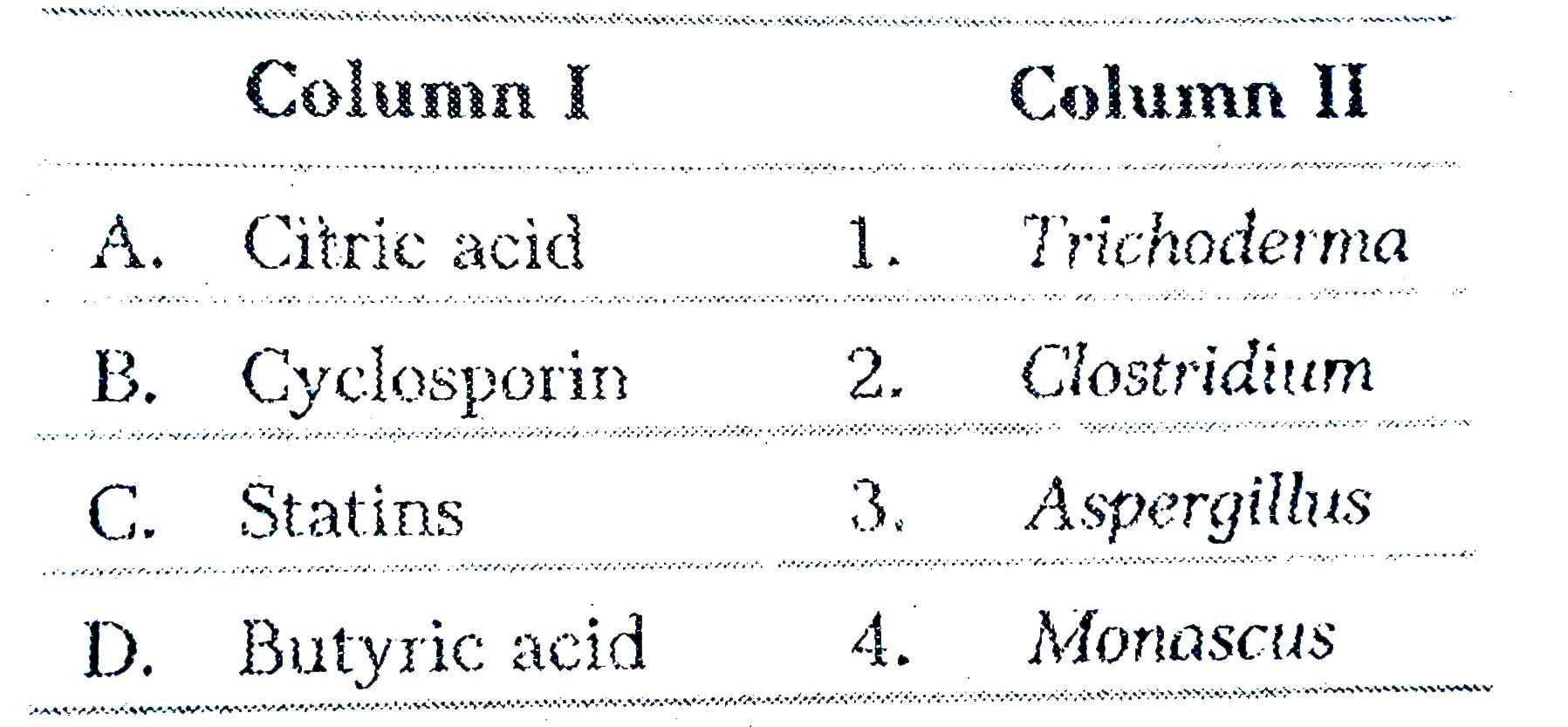Match column I with column II and select the correct option.

A
B
C
D
Text Solution
The correct Answer is:B
A - iii
Sickle cell anemia- As it is autosomal recessive disease therefore it can be transmitted from parents to the offspring when both male and female individuals are carriers (heterozygous) for the gene. The disease is controlled by a single pair of alleles, . Thus, three genotypes are possible in population.
(a) (Normal, homozygous)
(b) (Normal, carrier)
(c) (Diseased, die before attaining maturity).
The genes are located on chromosome number 11.
Heterozygous individuals are carriers of the disease as there is a 50% probability of transmission of the mutant gene to the progeny, thus exhibiting sickle-cell trait.
The disease/defect is caused by a mutation (transversion) of the gene controlling -chain of hemoglobin. The mutated gene is called cause one change in the amino acid sequence of chain. It replaces glutamic acid (Glu) present at the 6th position of the -chain by amino acid valine (Val).
B - i
Down Syndrome- It was first described in 1866 by Langdon Down. The disorder develops due to trisomy of chromosome number 21. The disease is also known as Mongolian idiocy. It is an autosomal chromosomal abnormality.
The trisomic condition arises due to the formation of (n+1) male or female gamete by non-disjunction and the subsequent fertilization by normal (n) gamete. In the majority of the cases, the female of an affected child is found to be more than 35 years of age.
C - iv
Klinefelter syndrome- It was first described in 1942 by Klinefelter. The disorder develops due to the trisomy of the sex chromosome. The disease is seen only in males. It is an autosomal chromosomal abnormality.
It is caused due to the presence of an additional copy of the X chromosome resulting in 44+XXY type chromosome components. This condition appears due to the association of an abnormal egg (22+XX) and a normal sperm (22+Y) or normal egg (22+X) and abnormal sperm (22+XY).
D- ii Turner.s syndrome-It was first described in 1938 by Turner. The disorder develops due to the monosomy of the sex chromosome. The disease is seen only in females. It is an autosomal chromosomal abnormality. The disorder is due to monosomy. It appears due to the fertilization of an abnormal egg (22+0) by a normal sperm (22+x) or a normal egg (22+x) with abnormal sperm (22+0).

|

